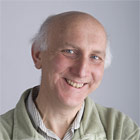Baltimore, MD
April 14–17, 2016
Conference Website
The National Association for Research in Science Teaching (NARST) is a worldwide organization of professionals committed to the improvement of science teaching and learning through research. Since its inception in 1928, NARST has promoted research in science education and the communication of knowledge generated by the research. The ultimate goal of NARST is to help all learners achieve science literacy. The theme of the 2016 annual international conference is “Toward Equity and Justice: Many Different Voices, Cultures, and Languages in Science Education Research for Quality Science Learning and Teaching.”
Saturday, April 16
Strand 10: Curriculum, Evaluation, and Assessment
Related Paper Set – Assessing Science and Engineering in the Next Generation Science Standards
 Assessing Informed Design Strategies Using CAD Logs
Assessing Informed Design Strategies Using CAD Logs
Jie Chao (The Concord Consortium), Charles Xie (The Concord Consortium), Saeid Nourian (The Concord Consortium), Guanhua Chen (University of Miami)
8:30am – 10:00am, Watertable Salon B
In an educational era that is filled with new standards and new accountability measures, how do researchers and practitioners assess science and engineering practices? And, more importantly, how do we gather validity evidence to accurately assess these practices? This paper set highlights research on aligned assessments to the Next Generation Science Standards and the various approaches to collecting appropriate validity evidence. The first paper discusses validity in light of recent science and engineering education reform and provides an overview of how the subsequent papers are intertwined. The second paper provides validity evidence for an observational protocol, Science Practices Observation Protocol (S-POP), through cognitive/think-aloud interviews. The third paper applies Rasch measurement theory to evaluate the Engineering Design (EDP) test. The fourth paper discusses the Conceptions of Design Test (CDT) and presents validity evidence for its utility in assessing high school students’ informed design practices. The fifth paper explores how stealth assessment, machine-generated logs of student behavior in a CAD design, can be used to understand student learning. This related paper set also represents collaboration between science/engineering education researchers, scientist/engineers, and measurement experts to produce robust research that can positively impact teaching and learning.
Strand 10: Curriculum, Evaluation, and Assessment
Symposium – Correlating Student Drawings and Texts to Assess Understanding of the Particle Model of Matter
Joi Merritt (Arizona State University), Elon Langbeheim (Arizona State University), Jennifer Chiu (University of Virginia), Sevil Akaygun (Bogazici University), Jie Chao (The Concord Consortium)
2:40pm – 4:10pm, Watertable Salon A
This symposium will examine the evaluation of students’ pictorial and written realizations of the particle model of matter. It will be based on empirical data from four different studies that examined student drawings and written explanations of the particle model across a variety of age groups and contexts. It will focus on the significance of student-made drawings, and their alignment with the written text that they produce. The findings from these studies will be used to develop a nuanced set of guidelines for evaluating students’ conceptual understanding of the particle model.
Sunday, April 17
Strand 4: Science Teaching
Middle and High School, (Grades 5-12): Characteristics and Strategies
 Developing Explanatory Gestures for the Seasons: Two Students’ Approaches
Developing Explanatory Gestures for the Seasons: Two Students’ Approaches
Nathan Kimball (The Concord Consortium), Robb Lindgren (University of Illinois Urbana-Champaign)
1:00pm – 2:30pm, Maryland Salon E
Our project investigates how body movement—gestures of the hands, in particular—supports reasoning of critical science concepts that have unseen structures and unobservable mechanisms, such as conduction by molecular motion. We conducted one-on-one clinical interviews with a diverse set of middle school students to uncover students’ ability to grow their understanding of key science concepts through questioning and through interaction with a sequence of physical and computer-based models. These video-recorded interviews captured the development of their ideas through multiple requests for explanation and also their spontaneous and prompted body movements made in support of their explanations. This paper reports on two interviews, and describes the way the students developed different, but consistent embodied expressions that aided in their understanding of the causes of the seasons. This paper will consider the nature of the differences in these expressions and their potential usefulness for understanding the phenomena.
